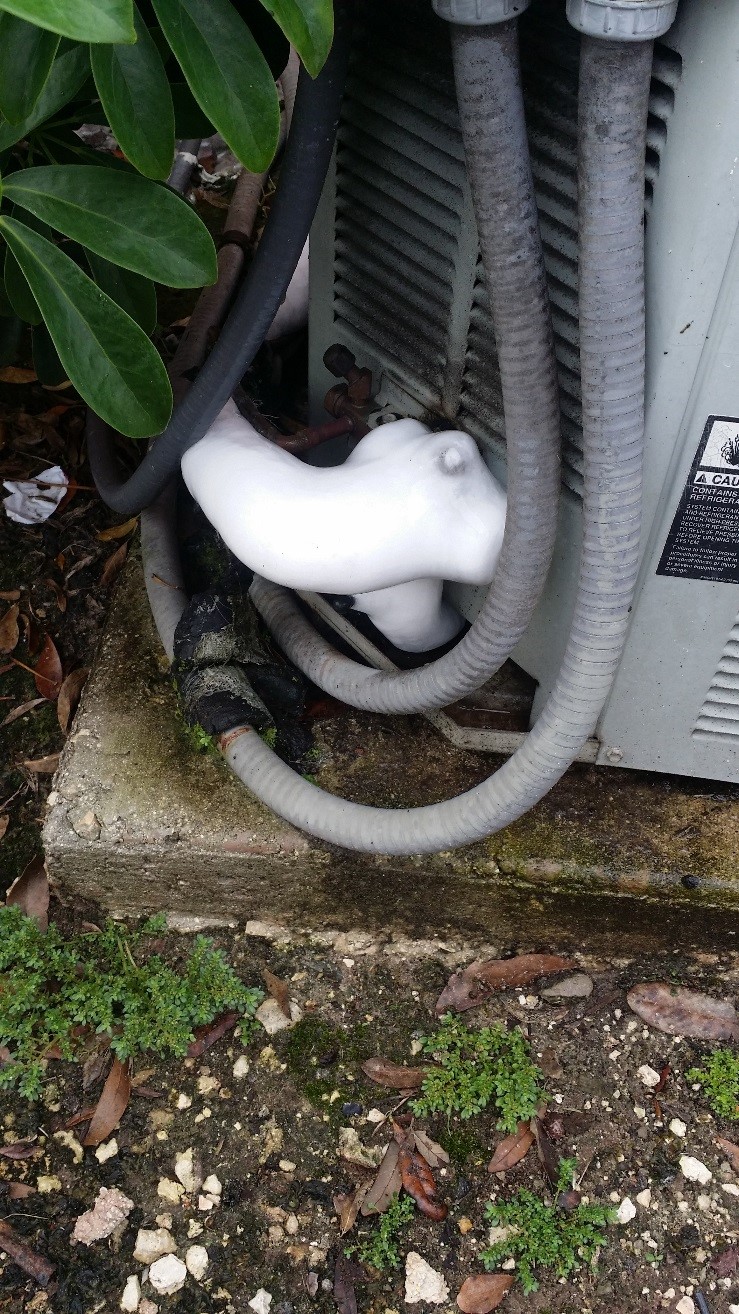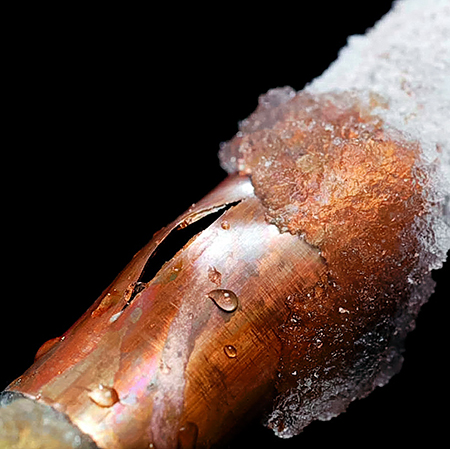What to I Do If My AC Pipe Is Frozen? - Key Tips for Fixing Functionality
What to I Do If My AC Pipe Is Frozen? - Key Tips for Fixing Functionality
Blog Article
We've discovered this article involving Have a Frozen AC Line? Here’s How to Fix It down the page on the web and decided it made sense to talk about it with you in this article.

Introduction
Finding that your AC pipe is iced up can be worrying, especially throughout warm summer season when you count on your air conditioning system the most. Understanding what to do in such a situation is crucial to avoid more damages to your air conditioning system and ensure your comfort inside.
Recognizing the Causes
Several aspects can add to the cold of an air conditioner pipe. Recognizing these causes can aid you attend to the concern successfully.
Absence of Airflow
One common reason for a frozen air conditioner pipe is inadequate air movement. When the airflow over the evaporator coil is limited, it can cause the coil to drop below freezing temperature, causing ice formation on the pipeline.
Reduced Refrigerant Levels
Not enough refrigerant levels in your a/c system can also lead to an icy pipe. Reduced refrigerant levels can cause the stress in the system to go down, bring about the cold of dampness on the evaporator coil.
Winter Conditions
In chillier climates, freezing temperatures outside can add to the cold of a/c pipes. If your air conditioner device is not appropriately protected or if there are leaks in the ductwork, cool air can penetrate the system, causing the pipeline to ice up.
Dirty Air Filters
Filthy or clogged air filters can restrict air flow in your air conditioner system, resulting in numerous issues, consisting of an icy pipe. It's vital to replace or clean your air filterings system on a regular basis to make sure proper air movement and avoid ice accumulation.
Signs of a Frozen AC Pipe
Acknowledging the signs of an icy a/c pipe is vital for timely activity.
Reduced Airflow
If you observe a substantial reduction in airflow from your vents, it might suggest an icy pipeline.
Ice Buildup on the Pipe
Visible ice build-up on the cooling agent line or the evaporator coil is a clear indicator of an icy air conditioning pipe.
Odd Sounds from the Unit
Unusual noises, such as hissing or gurgling, originating from your a/c device can indicate that there's ice existing on the pipe.
Immediate Actions to Take
When faced with an icy air conditioning pipe, it's important to act rapidly to avoid further damage to your cooling system.
Switching off the air conditioner
The initial step is to switch off your a/c unit to stop the system from running and worsening the issue.
Looking for Blockages
Inspect the location around the indoor unit for any type of blockages that might be obstructing air flow, such as furniture or drapes.
Thawing the Pipe
You can make use of gentle methods like placing towels soaked in warm water around the icy pipeline to aid thaw it gradually.
Safety nets
Taking safety nets can assist avoid future occurrences of a frozen AC pipe.
When DIY Methods Fail
If your attempts to thaw the pipe or address other problems are unsuccessful, it's time to employ an expert.
Value of Hiring a Professional HVAC Technician
A certified HVAC service technician has the know-how and devices needed to detect and fix issues with your air conditioner system securely and effectively.
Routine Maintenance Checks
Arrange routine maintenance contact an expert HVAC service technician to make certain that your air conditioning system is running successfully.
Transforming Air Filters
Frequently change or clean your air filters to avoid air movement restrictions and maintain optimum performance.
Shielding Exposed Pipes
If your air conditioner pipelines are subjected to chilly temperature levels, think about insulating them to stop freezing during cold weather.
Seeking Professional Help
If DIY approaches fail to deal with the issue or if you're unsure regarding exactly how to proceed, it's ideal to seek assistance from a certified HVAC specialist.
Verdict
Handling a frozen air conditioning pipe can be an aggravating experience, but recognizing exactly how to respond can assist reduce damages and recover convenience to your home. By comprehending the reasons, acknowledging the indicators, and taking timely activity, you can successfully address the problem and prevent future incidents.
What to Do If Your AC Line Is Frozen
Make Sure All Supply and Return Air Vents Are Open
If you notice problems with airflow, the first thing you should do is check your supply and return vents. Supply vents distribute clean, conditioned air throughout your home. As this air becomes stale, it’s pulled into the return vent, where it’s reconditioned before being sent back out through the supply vent.
When these vents are closed, air won’t flow in the home. Before examining your AC, check the vents in every room and ensure they’re all open.
Check for a Dirty Air Filter
Another possible cause of limited airflow is a dirty air filter. Your air conditioner’s filters catch elements you don’t want to breathe in, such as dirt and dust. Over time, filters can become clogged, ultimately blocking air from flowing in and out. The lack of airflow can then cause the entire coil to freeze and will completely restrict any air from moving through it. The AC may need to be powered off for one to two days to allow the coil to thaw after replacing the filter to allow proper functioning of the unit. This debris can also accumulate on your AC’s evaporator coil, requiring a more serious repair. In general, air filters should be cleaned regularly (about every two weeks).
Assess Your Outdoor Unit
In addition to checking your AC, assessing the outdoor unit is a good idea. Also known as the condensing unit, it works with your interior unit to release heat outside. An issue with the outdoor unit can result in rising internal temperatures.
Overgrown Shrubs or Clogged Leaves
From leaves and twigs to shrubs and debris, there’s no shortage of outdoor elements that can accumulate around your condensing unit. When these elements get lodged inside the unit, they can block airflow. Fortunately, removing the blockage can solve the problem.
Sounds of a Broken Fan
Shrubs and leaves aren’t the only things that can impede your outdoor unit’s airflow. If the fan is broken, the unit won’t be able to properly get rid of heat — which means the internal temperature won’t go down. First, make sure the fan is spinning. If it is, check for the following sounds of a broken fan:
Buzzing Rattling Screeching Hissing Clicking Preventative Measures
Nobody wants to deal with a frozen AC line. In addition to causing problems with your air conditioner, they require professional repairs. On the bright side, there are preventative measures you can take to help ensure this issue doesn’t arise in the first place.
https://www.coopergreenteam.com/blog/what-to-do-if-ac-line-frozen

I am just very intrigued by Why Is Ice On My Outside Air Conditione and I hope you enjoyed our blog posting. Sharing is good. Helping people is fun. Thanks a bunch for your time. Visit us again soon.
Click Here Report this page